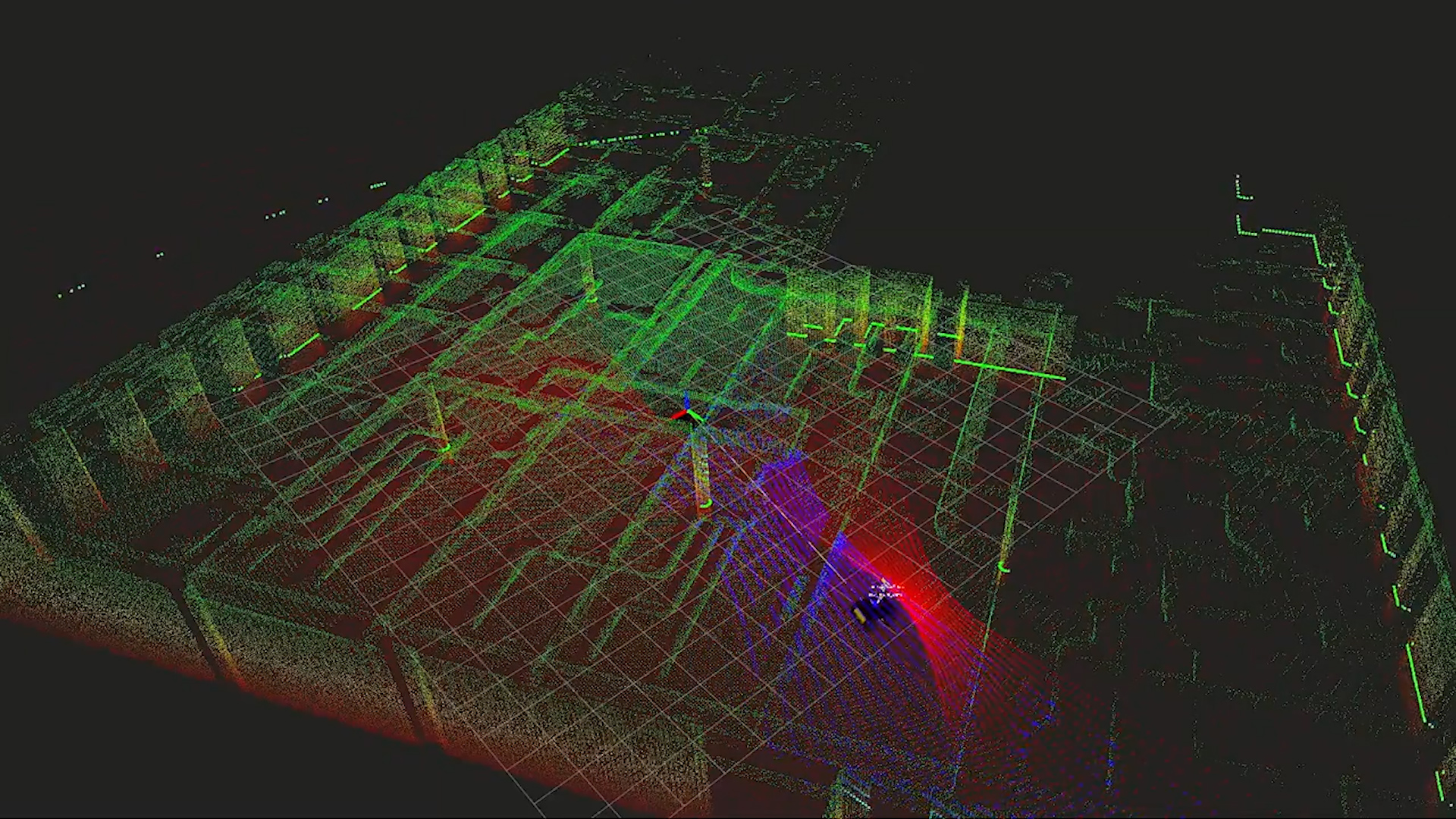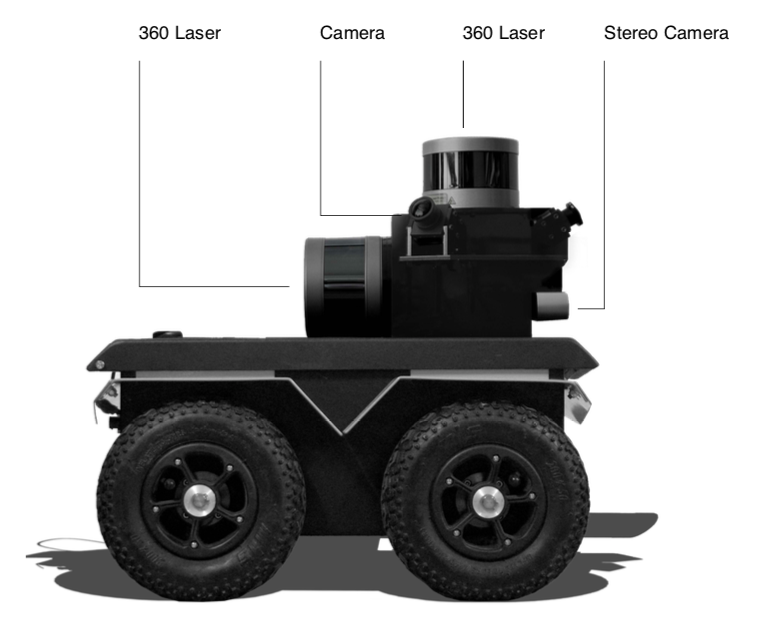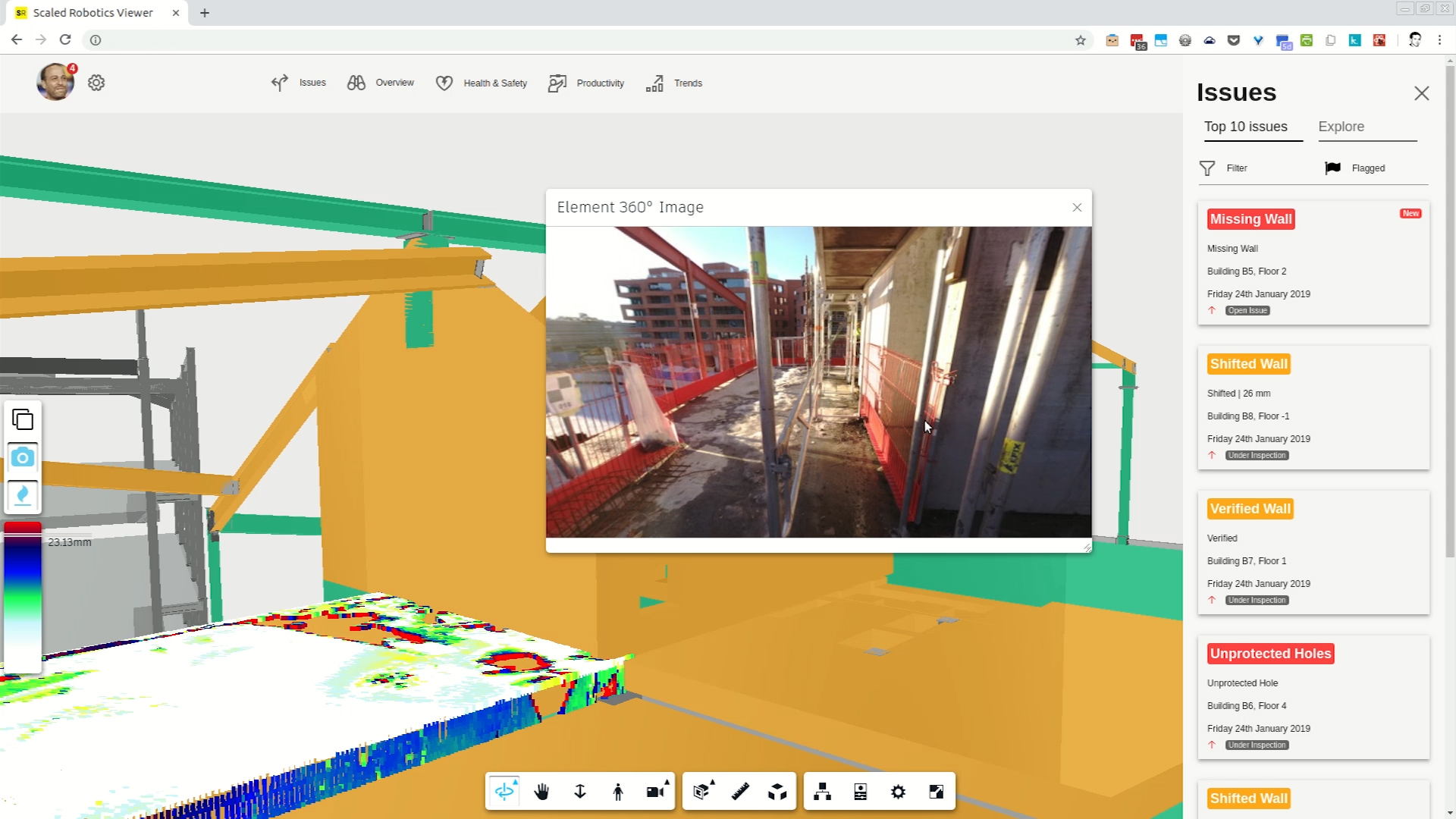Buildings under construction are a maze of half-completed structures, gantries, stacked materials, and busy workers — tracking what’s going on can be a nightmare. Scaled Robotics has designed a robot that can navigate this chaos and produce 3D progress maps in minutes, precise enough to detect that a beam is just a centimeter or two off.
Bottlenecks in construction aren’t limited to manpower and materials. Understanding exactly what’s been done and what needs doing is a critical part of completing a project in good time, but it’s the kind of painstaking work that requires special training and equipment. Or, as Scaled Robotics showed today at TC Disrupt Berlin 2019, specially trained equipment.
The team has created a robot that trundles autonomously around construction sites, using a 360-degree camera and custom lidar system to systematically document its surroundings. An object recognition system allows it to tell the difference between a constructed wall and a piece of sheet rock leaned against it, between a staircase and temporary stairs for electric work, and so on.
By comparing this to a source CAD model of the building, it can paint a very precise picture of the progress being made. They’ve built a special computer vision model that’s suited to the task of sorting obstructions from the constructions and identifying everything in between.
All this information goes into a software backend where the supervisors can check things like which pieces are in place on which floor, whether they have been placed within the required tolerances, or if there are safety issues like too much detritus on the ground in work areas. But it’s not all about making the suits happy.
“It’s not just about getting management to buy in, you need the guy who’s going to use it every day to buy in. So we’ve made a conscious effort to fit seamlessly into what they do, and they love that aspect of it,” explained co-founder Bharath Sankaran. “You don’t need a computer scientist in the room. Issues get flagged in the morning, and that’s a coffee conversation – here’s the problem, bam, let’s go take a look at it.”

The robot can make its rounds faster than a couple humans with measuring tapes and clipboards, certainly, but also someone equipped with a stationary laser ranging device that they carry from room to room. An advantage of simultaneous location and ranging (SLAM) tech is that it measures from multiple points of view over time, building a highly accurate and rich model of the environment.
 The data is assembled automatically but the robot can be either autonomous or manually controlled — in developing it, they’ve brought the weight down from about 70 kilograms to 20, meaning it can be carried easily from floor to floor if necessary (or take the elevator); and simple joystick controls mean anyone can drive it.
The data is assembled automatically but the robot can be either autonomous or manually controlled — in developing it, they’ve brought the weight down from about 70 kilograms to 20, meaning it can be carried easily from floor to floor if necessary (or take the elevator); and simple joystick controls mean anyone can drive it.
A trio of pilot projects concluded this year and have resulted in paid pilots next year, which is of course a promising development.
Interestingly, the team found that construction companies were using outdated information and often more or less assumed they had done everything in the meantime correctly.
“Right now decisions are being made on data that’s maybe a month old,” said co-founder Stuart Maggs. “We can probably cover 2000 square meters in 40 minutes. One of the first times we took data on a site, they were completely convinced everything they’d done was perfect. We put the data in front of them and they found out there was a structural wall just missing, and it had been missing for 4 weeks.”
The company uses a service-based business model, providing the robot and software on a monthly basis, with prices rising with square footage. That saves the construction company the trouble of actually buying, certifying, and maintaining an unfamiliar new robotic system.

But the founders emphasized that tracking progress is only the first hint of what can be done with this kind of accurate, timely data.
“The big picture version of where this is going is that this is the visual wiki for everything related to your construction site. You just click and you see everything that’s relevant,” said Sankaran. “Then you can provide other ancillary products, like health and safety stuff, where is storage space on site, predicting whether the project is on schedule.”
“At the moment, what you’re seeing is about looking at one moment in time and diagnosing it as quickly as possible,” said Maggs. “But it will also be about tracking that over time: We can find patterns within that construction process. That data feeds that back into their processes, so it goes from a reactive workflow to a proactive one.”
“As the product evolves you start unwrapping, like an onion, the different layers of functionality,” said Sankaran.
The company has come this far on $1 million of seed funding, but is hot on the track of more. Perhaps more importantly, its partnerships with construction giant PERI and Autodesk, which has helped push digital construction tools, may make it a familiar presence at building sites around the world soon.
